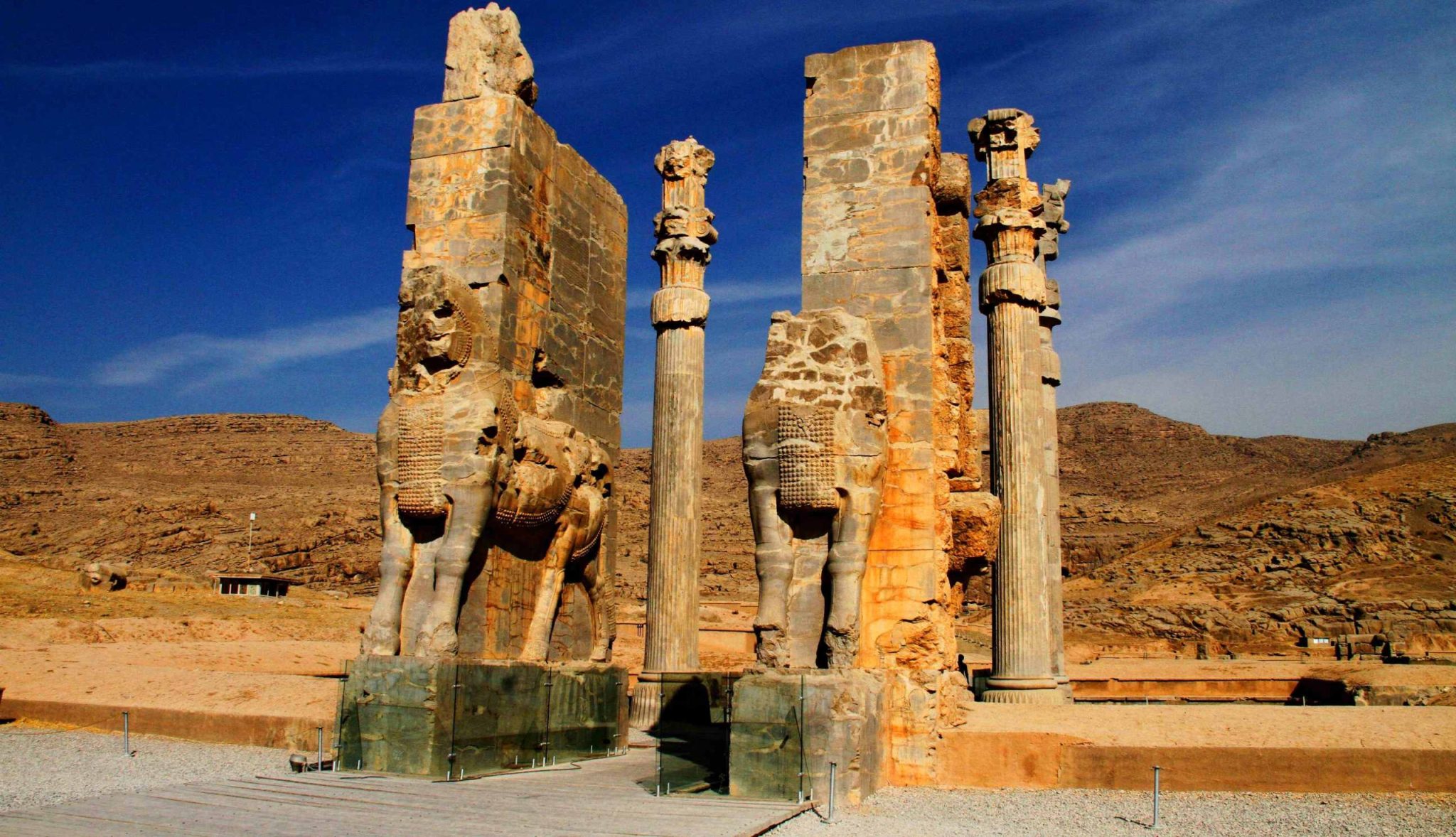One of the great wonders of the ancient world, Persepolis embodies not just a grand architectural scheme but also a grand idea.
Once the capital of the first Persian Empire and birthplace of Persian civilization, it’s vital that you visit Persepolis. In fact, you haven’t seen Iran unless you’ve walked in the footsteps of the ancient kings.
Persepolis (Takht-e Jamshīd) is an ancient capital of the kings of the Achaemenian dynasty of Iran (Persia), located about 30 miles (50 km) northeast of Shīrāz in the Fars region of southwestern Iran. It was conceived by Darius the Great who, in 520 BC, inherited the responsibility for ruling the world’s first known empire founded by his predecessor, Cyrus the Great.
The English word Persepolis is derived from Greek Persépolis, a compound of Pérsēs and pólis, meaning “the Persian city” or “the city of the Persians”. To the ancient Persians, the city was known as Pārsa, which is also the word for the region of Persia.
At the heart of the city lay the royal palace – a wonder of gold and silver, ivory, and precious stones. From there, Xerxes planned his war against Greece – and the treasure of a vast empire piled up in the store-rooms. The stone of this site was cut with the utmost precision into blocks of great size, which were laid without mortar; many of them are still in place. Especially striking are the huge columns, 13 of which still stand in the audience hall of Darius I (the Great; reigned 522–486 BCE), known as the apadana, the name given to a similar hall built by Darius at Susa. There are two more columns still standing in the entrance hall of the Gate of Xerxes, and a third has been assembled there from its broken pieces.
Though archaeologists have discovered evidence of prehistoric settlement, inscriptions indicate that construction of the city began under Darius I, who, as a member of a new branch of the royal house, made Persepolis the capital of Persia proper, replacing Pasargadae, the burial place of Cyrus II (the Great). Built in a remote and mountainous region, Persepolis was an inconvenient royal residence, visited mainly in the spring. The effective administration of the Achaemenian realms was carried on from the imperial cities of Susa, Babylon, and Ecbatana. This accounts for the Greeks being unacquainted with Persepolis until Alexander the Great’s invasion of Asia. In 330 BCE, during the reign of Darius III, Alexander plundered the city and burned the palace of Xerxes, whose brutal campaign to invade Greece more than a century before had led, eventually, to Alexander’s conquest of the Persian empire. In 316 BCE Persepolis was still the capital of Persis as a province of the Macedonian empire. The city gradually declined under the Seleucid kingdom and after, its ruins attesting its ancient glory.
The function of Persepolis remains rather unclear. It was not one of the largest cities in Persia, let alone the rest of the empire, but appears to have been a grand ceremonial complex, that was only occupied seasonally; it is still not entirely clear where the king’s private quarters actually were. Until recent challenges, most archaeologists held that it was especially used for celebrating Nowruz, the Persian New Year, held at the spring equinox, and still an important annual festivity in modern Iran. The Iranian nobility and the tributary parts of the empire came to present gifts to the king, as represented in the stairway reliefs.
The Persepolis Ensemble was registered in the national list of Iranian monuments as item no. 20 on the 24th of the month Shahrivar, 1310 SAH (15 September 1931). Relevant national laws and regulations concerning the property include the National Heritage Protection Law (1930, updated 1998) and the 1980 Legal bill on preventing clandestine diggings and illegal excavations. The inscribed World Heritage property, which is owned by the Government of Iran, and its buffer zone are under the legal protection and management of the Iranian Cultural Heritage, Handicrafts and Tourism Organization (which is administered and funded by the Government of Iran). In 1979 the ruins were designated a UNESCO World Heritage site.







